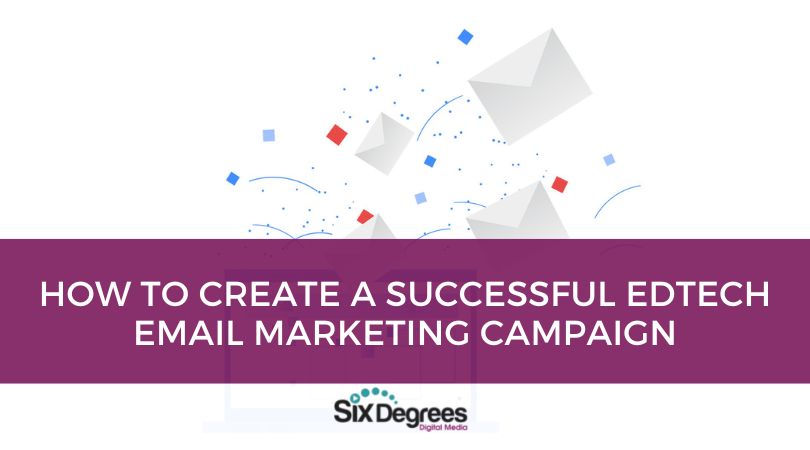
Email marketing is the most effective way to successfully move leads through your funnel and turn interested audience members into loyal buyers and fans of your brand. However, with all its moving parts, it can be difficult to know how to build a powerful EdTech email marketing campaign that will have the biggest impact on your subscribers. The answer begins and ends with your audience in mind.
In this blog, we’ll cover:
- Understanding your target audience
- Building an email list
- Best practices for email design
- Creating engaging subject lines
- Writing effective email copy
- Benefits of list segmentation
- Automating and Personalizing Emails
Understanding Your Target Audience
Understanding your target audience is crucial for the success of any marketing campaign, including EdTech email marketing. This involves conducting demographic research to gain a better understanding of the characteristics, behaviors, and needs of your ideal customer. This information can be gathered through various methods, such as surveys, focus groups, and customer interviews. It can be as simple as asking your current audience, “why did you subscribe to this list and what value can we offer you?”
Identifying key trends and interests of your target audience is also important. This can be done by analyzing industry reports, monitoring social media, and tracking the behavior of your email subscribers. This information can be used to create a unique value proposition, which will help to differentiate your EdTech products or services from the competition.
Having a clear understanding of your target audience will enable you to tailor your email marketing campaigns to their specific needs and interests. This will result in higher open and click-through rates, as well as increased conversions. By investing the time and effort to understand your target audience, you will be able to create a successful EdTech email marketing campaign that resonates with your customers and drives business results.
How to Build an Email List for your EdTech Company
Building an email list is a crucial step in creating a successful EdTech email marketing campaign. A robust email list is a valuable asset that will allow you to reach potential customers directly and consistently. Email marketing has a higher return on investment compared to other digital marketing channels, making it an essential tool for EdTech companies.
Best practices for email list building include offering incentives such as free trials, discounts, or e-books in exchange for an email address. It is also important to make sure that the sign-up process is easy and straightforward, with clear instructions and a simple form. Utilizing lead magnets and landing pages can help to increase the number of email subscribers.
In addition to ethical considerations, such as obtaining explicit consent from subscribers and honoring opt-out requests, it is important to be transparent about your email marketing practices. This includes clearly communicating the frequency and type of emails that subscribers can expect to receive.
Keeping your Email List Healthy
In addition to building an email list, it is important to maintain a clean and up-to-date email list. This involves regularly removing inactive subscribers and updating contact information. Keeping your email list clean will help to ensure that your emails are reaching their intended recipients and that your email marketing efforts are as effective as possible.
Best Practices for Email Design
Keep it simple and clean: A cluttered design can be overwhelming for your recipients and make it difficult for them to focus on your message. Stick to a clean, minimal design with a clear hierarchy of information.
Use a responsive design: More than half of all emails are now opened on mobile devices, so it’s essential to ensure that your emails look great on any device. A responsive design adjusts to the size of the screen, making it easy for recipients to read and interact with your email on any device.
Use high-quality images: Images can help your emails stand out and convey your message more effectively. Make sure to use high-quality images that are optimized for email and don’t slow down the loading time of your email.
Or opt to leave images out: Think about your audience- if they use ISPs that are likely to hide images or otherwise interfere with a visual design, opt for a plain text email instead
Incorporate branding: Your email design should reflect your brand’s personality and help to build recognition and trust. Incorporate your brand’s color palette, logo, and font into your email design to create a consistent and recognizable look and feel.
Creating Engaging Subject Lines
Keep it short and sweet: The subject line is the first thing your recipients will see, so it’s crucial to keep it short and to the point. Aim for fewer than 50 characters if possible, and make sure your subject line accurately reflects the content of your email.
Make it attention-grabbing: Your subject line should be eye-catching and make your recipients want to open your email. Use action-oriented language, create a sense of urgency, or offer a unique benefit to entice your recipients to open your email.
Avoid spam trigger words: Some words and phrases can trigger spam filters, so it’s important to avoid them in your subject line. Words like “free,” “earn money fast,” and “limited time offer” are common spam triggers, so use caution when using these phrases.
Writing Effective Email Copy
Start with a clear and concise opening: Your opening should grab your recipient’s attention and make them want to read more. Start with a clear and concise statement that accurately reflects the content of your email.
Focus on benefits: Your email copy should focus on the benefits of your product or service and what it can do for your recipient. Avoid using industry jargon and focus on language that is easy to understand.
Use short paragraphs and subheadings: Break up your email copy into short paragraphs and use subheadings to make it easier to read and scan. This will make your email more visually appealing and make it easier for your recipients to find the information they are looking for.
Include a call to action: Your email should include a clear call to action that tells your recipients what you want them to do next. This could be to visit your website, make a purchase, or sign up for a newsletter. Make sure your call to action is prominent and easy to see.
Benefits of Email List Segmentation
Email list segmentation is the process of dividing your email list into smaller groups based on specific criteria, such as demographic, behavior, or engagement. This technique allows businesses to tailor their email campaigns to meet the unique needs and preferences of their audience, resulting in increased engagement and conversions.
Improved Engagement: By sending relevant and targeted messages, you increase the chances of your audience engaging with your content and taking action.
Increased Relevance: Segmenting your email list allows you to send more relevant and personalized messages, which are more likely to be read and acted upon.
Higher Open Rates: Targeted and relevant messages have a higher chance of being opened compared to generic emails.
Better Deliverability: Segmenting your email list can help to improve deliverability rates by reducing the number of emails that are marked as spam.
Identifying Segments within Privacy Law Limitations
With the increasing concern for data privacy, new laws have been put in place to limit the amount of personal information businesses can collect and use for marketing purposes. Despite these limitations, it’s still possible to effectively segment your email list. Here are a few methods to consider:
Subscriber Data: Utilize the information provided by your subscribers during sign-up, such as their location or the type of products they are interested in.
Surveys and Polls: Conduct surveys and polls to gather information about your subscribers’ preferences and interests. This data can be used to create targeted campaigns.
Opt-in Segmentation: Offer subscribers the option to choose the type of content they receive from your brand, such as offers or promotions. This data can be used to segment your email list and create targeted campaigns.
By focusing on these areas, you can effectively segment your email list within the constraints of privacy laws. It’s important to always ensure that you are adhering to all privacy laws and regulations and obtaining explicit consent from your subscribers before using their data for marketing purposes.
Tailoring Emails to Specific Segments
Now that you have your segments, you can make your email marketing more impactful for each one by changing up the content that you offer.
Personalization: Personalize your emails by including the recipient’s name and using language that speaks directly to their needs and interests.
Relevant Content: Create content that is relevant to each segment, including offers, promotions, and information that is specific to their needs and preferences.
Dynamic Content: Use dynamic content to tailor your emails based on specific criteria, such as location, purchase history, or previous engagement.
Testing: Continuously test and refine your campaigns to ensure that they are resonating with your audience and driving results.
Automating and Personalizing Emails in EdTech
In the EdTech industry, automation and personalization play a crucial role in effectively reaching and engaging students and educators. Automated emails are pre-written messages triggered by specific actions or behaviors, such as welcome messages, course reminders, or follow-up emails. Personalization refers to the customization of emails to meet the unique needs and preferences of each recipient, like we mentioned above. By automating repetitive tasks and personalizing emails to meet the unique needs and preferences of each student and teacher, EdTech companies can improve engagement, efficiency, and experience. Here are some of the biggest benefits that EdTech companies can get out of using automation in their email marketing as well as with emails to current clients.
Improved Student Engagement: Automated and personalized emails help to increase student engagement, improving the overall learning experience.
Increased Efficiency: Automation allows EdTech companies to automate repetitive and time-consuming tasks, freeing up time to focus on other aspects of their strategy.
Better Teacher Experience: Personalization helps to provide teachers with relevant information and resources, improving the experience they have with the EdTech platform.
Best Practices for Automated Emails in EdTech
Define Your Goals: Start by defining your goals and the actions you want your automated emails to trigger.
Choose the Right Triggers: Determine the best triggers for your automated emails, such as a student’s course progress or a teacher’s sign-up date.
High-Quality Content: Ensure that your automated emails have high-quality content that is relevant to the recipient.
Test and Refine: Test different elements of your emails, such as subject lines, images, and calls to action, to determine what resonates with your audience and drives the best results.
Where to Start
Now that you have a better understanding behind what makes a great email marketing campaign in the EdTech industry, it’s time to get started with building one for your business. Before you start churning out subject lines, bring it back to the beginning and focus on your audience. Understanding the wants, fears, and key purchase drivers of your target audience will put you a step ahead of your competitors in all aspects of your digital marketing, especially email.
Get a step ahead of the competition by downloading our free Ultimate EdTech Marketing Template.
One Comment
Comments are closed.


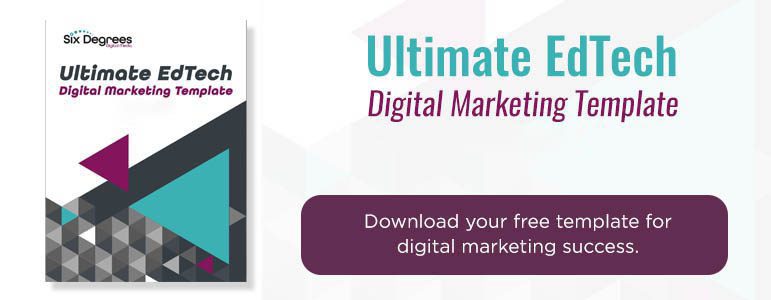
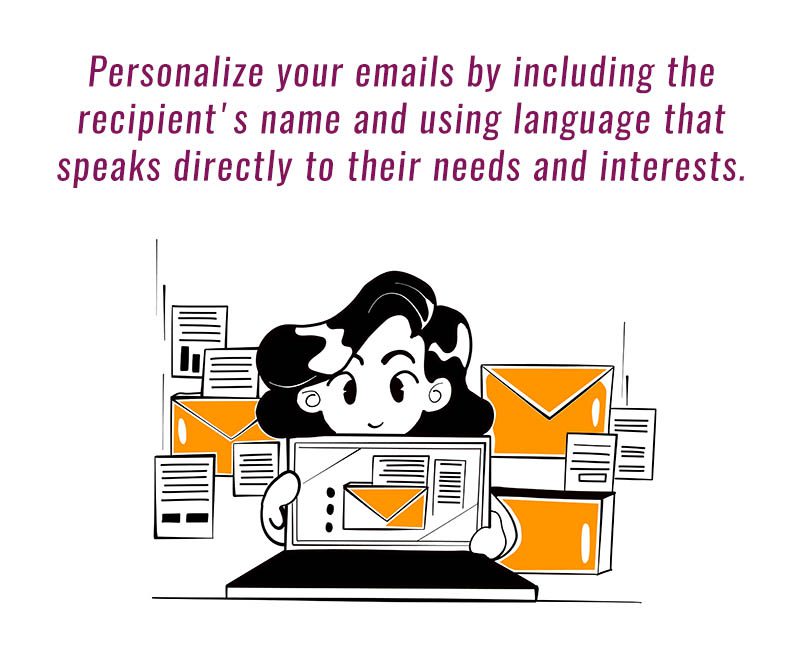
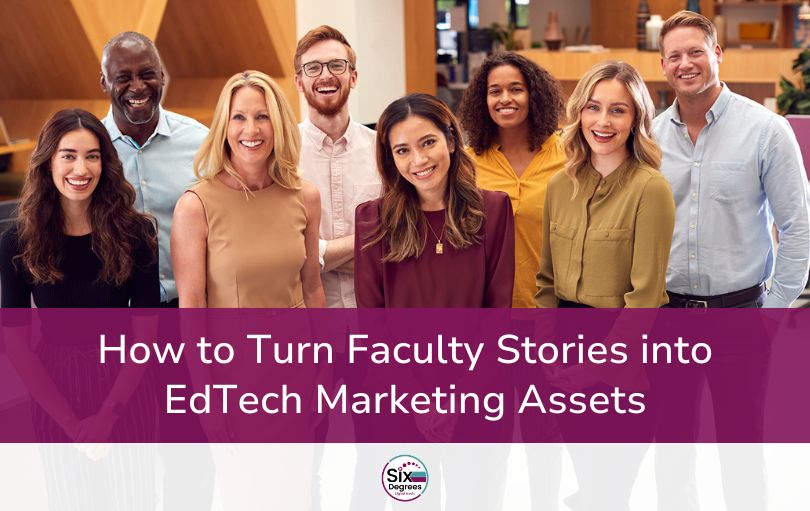
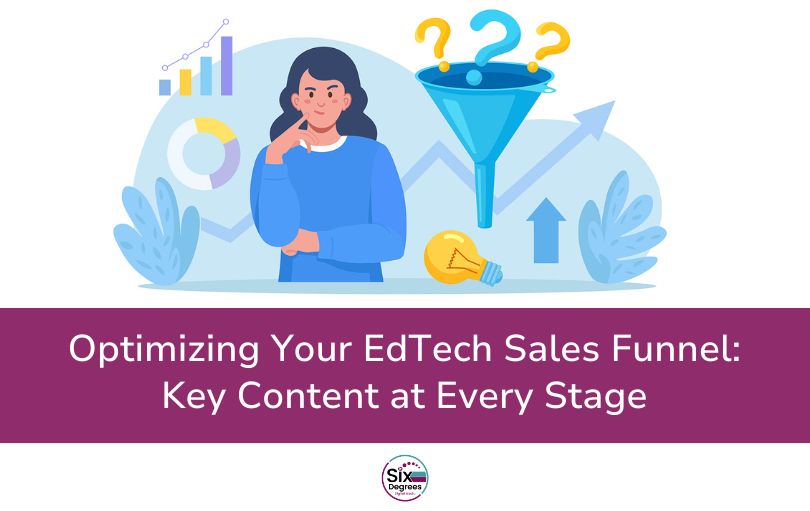
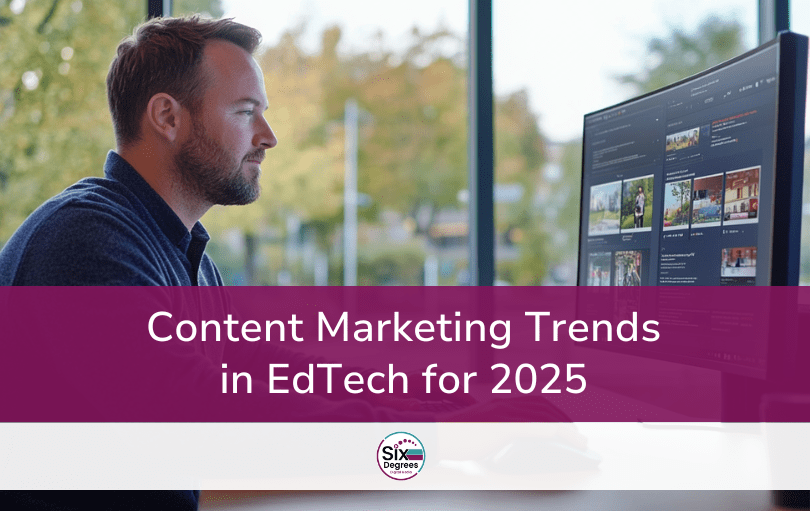
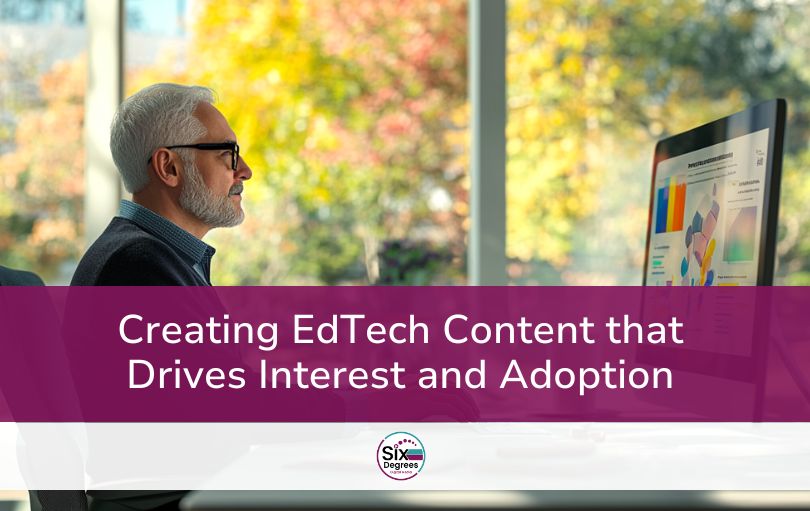
[…] is essential for the success of any business. These leads can then be nurtured over time through email marketing or other targeted advertising campaigns, which helps to increase brand awareness and […]